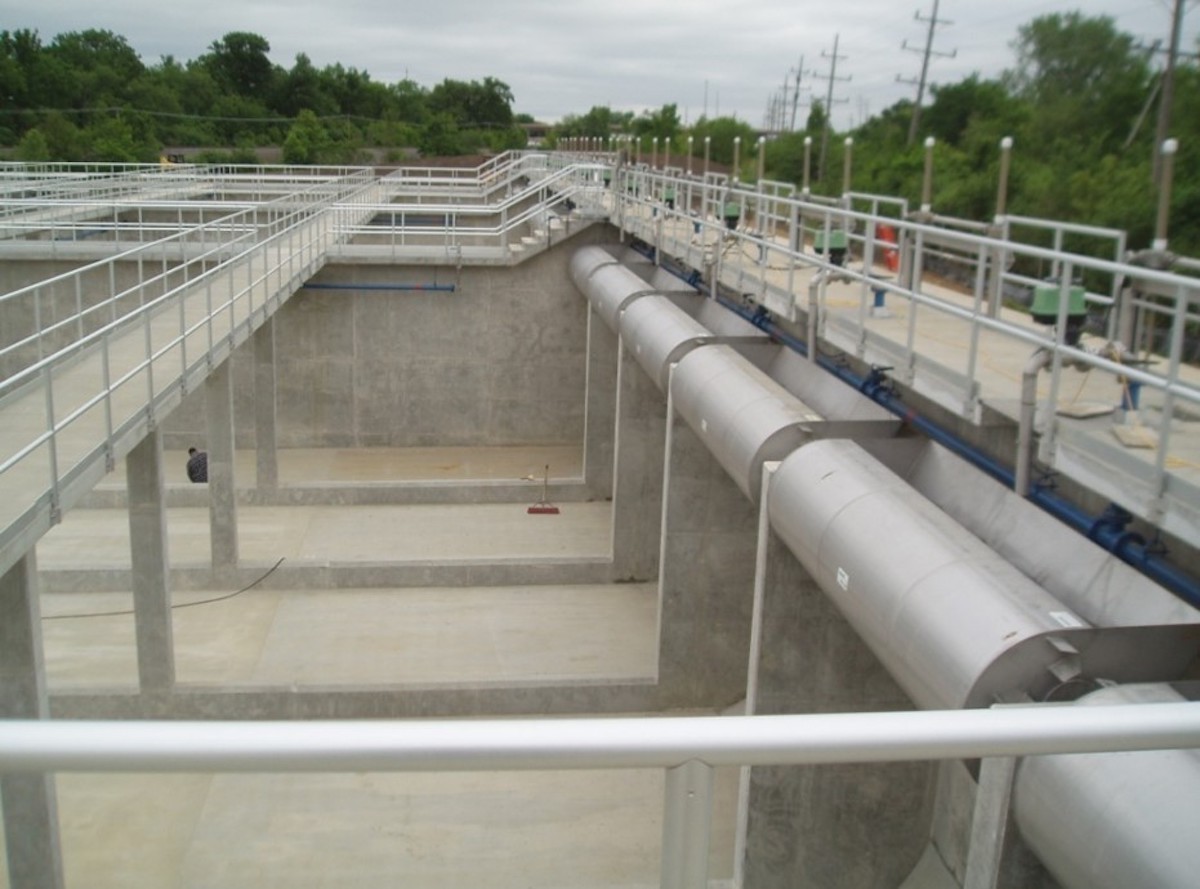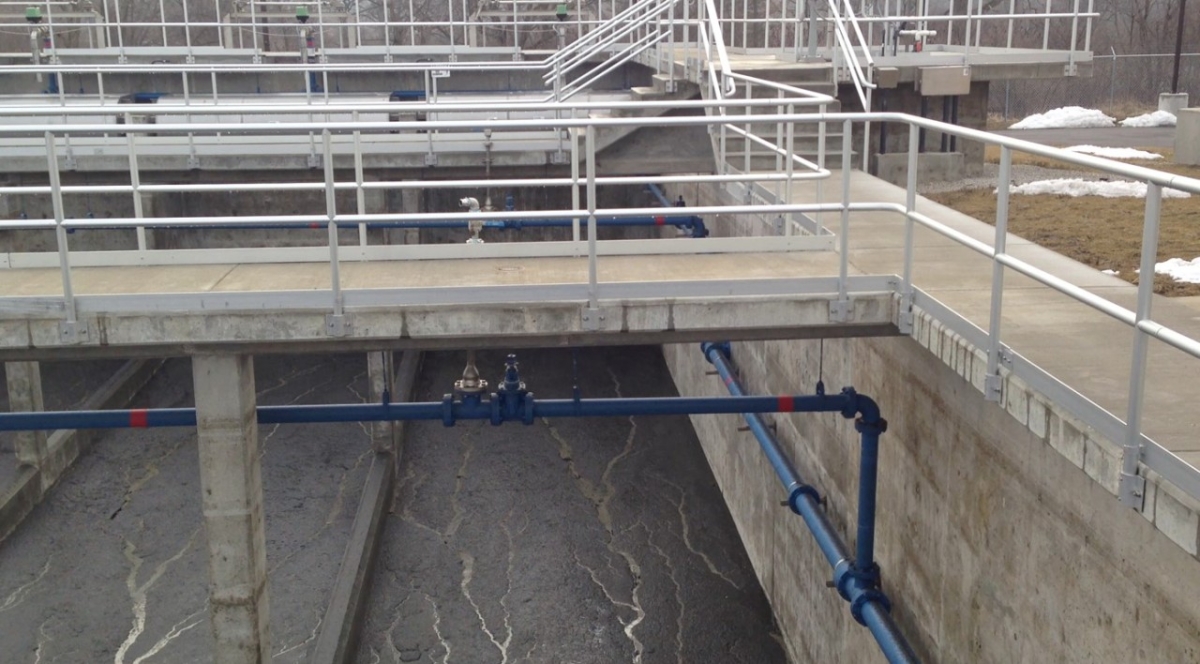Municipal wastewater treatment technologies: the primary stage
Conventional wastewater treatment involves several physical, chemical and biological processes to remove solids, organic matter and nutrients from wastewater. Primary treatment removes coarse solids and other large materials from wastewater.
At this stage, municipal wastewater treatment technologies eliminate organic and inorganic solids and floatable components by allowing them to settle and skimming them out. They also reduce biochemical oxygen demand (BOD) and total suspended solids (TSS) levels before pumping wastewater into the aerobic or anaerobic digestion process.
Key steps of primary wastewater treatment are:
- Removing large floating objects with a screen as sewage passes through to prevent clogged pipes or damaged equipment.
- Filtering cinders (inorganic material), like sand and small stones from screened sewage via the grit separators.
- Coagulating suspended solids into a mass of raw biosolids, or sludge, as they sink to the sedimentation tank floor.
This blog post discusses several established and emerging technologies municipal wastewater plants use during the primary treatment stage.
Primary wastewater treatment: An overview of established technologies
The primary treatment stage generally removes around 25-50% of incoming BOD, 50-70% of TSS and 65% of oil and grease from wastewater. Primary sedimentation also removes some organic nitrogen, organic phosphorus and heavy metals associated with solids. Examples of established primary stage treatment technologies used at municipal wastewater treatment plants (WWTPs) across the U.S. include:
Advanced grit removal system
Grit affects the downward treatment of wastewater and subsequently increases WWTP maintenance and operating costs. The conventional design for headworks grit removal equipment at WWTPs operates under a standard assumption about particle size. Customary designs presume the majority of grit particles exceeds 212 microns in diameter with a specific gravity of 2.65. However, systems designed around these accepted standards only remove 30-50% of incoming grit. Some WWTPs with advanced grit removal systems such as Grit King, PISTA Grit, HeadCell and Hydro-Grit can remove as much as 85-95% of all grit entering the plant.
Grit removal traveling bridge
Many municipal WWTPs remove grit and grease from rectangular tanks via grit removal traveling bridges. Dividing each tank into two sections separates grit settling processes from grease collection. An air-injection system inside the grit channel separates inorganic and other floating particles. The bridge travels back and forth, conveying settled grit into a collection hopper while moving in one direction and collecting scum and floating particles in the other.
Screening
A majority of large WWTPs use mechanically cleaned screening systems to remove large solids, rags and debris. With openings of 6 millimeters (mm) and larger, coarse screens typically filter out the largest particles. Cylindrical drum screens rotate in the flow channel to retain fine solids. Fine screens, with openings from 1.5 mm to 6 mm, remove materials large enough to cause operational or maintenance issues in downstream processes. Micro screens, with openings from 0.2 mm to 1.5 mm, further reduce suspended solids. Fixed and movable plates called step screens, with 3 mm minimum openings, are designed to handle large flow rates of sewage when placed across the width of the flow channel to separate suspended solids.
Chemically enhanced primary treatment
A chemically enhanced primary treatment for wastewater uses coagulants like alum and iron salts, or flocculants such as poly aluminum chloride and polyacrylamide. These chemicals combine with solids in wastewater to accelerate settling. After settling and removing all solids, the wastewater is disinfected and neutralized. This primary treatment process equips WWTPs to handle unexpected wet weather flows without increasing biological treatment capacity.
Apart from established municipal wastewater treatment technologies, some emerging primary stage technologies are testing a pilot or demonstration scale at various WWTPs.
Innovative municipal wastewater treatment technologies for the primary stage
Some innovative and emerging technologies for the primary wastewater treatment stage include:
- Salsnes Filter: As a removable fine mesh screen attached to a moving belt of wire cloth, a Salsnes Filter removes fine primary solids from wastewater. The rotating filter mesh can remove more than 50% of suspended solids and 20% of BOD. It also functions as an effective alternative to conventional primary treatment technologies like sedimentation tanks and clarifiers.
- Compressible media filtration: This method uses a synthetic fiber media bed to remove large and small particles during primary wastewater treatment. The media bed can handle heavy solids, including particulates and soluble BOD, and can increase a WWTP's organic removal capacity without increasing power consumption.
- High-rate physical and chemical clarification process for treating primary effluents: Patented processes such as Actiflo use a coagulant to destabilize suspended solids in wastewater. Adding a ballast particle (or microsand) as the flow enters the coagulation tank produces a large surface area on which suspended solids can bond and settle more quickly. The process serves as an effective primary treatment for wet-weather flows and can also treat primary and tertiary effluents.
- AquaPrime Cloth Media Filtration: This patented system is designed as an economical and effective alternative to conventional primary treatment technologies. Without chemicals, it effectively filters high-solid waste streams, reduces BOD and increases TSS removal with a smaller footprint.
Just as no two WWTPs are identical, the choice of primary treatment technology varies. A wastewater engineer can best evaluate the efficacy and cost-efficiency of established or emerging municipal wastewater treatment technologies to help municipal leaders make informed choices.
Determining the best wastewater treatment technology for your plant
At Fehr Graham, we understand the challenges municipalities face to comply with effluent limits and implement effective treatment technologies within budget. We have provided wastewater treatment solutions to communities across the Midwest since 1973. From designing individualized, cost-effective WWTP solutions to securing financing for treatment technologies, we provide end-to-end assistance with municipal wastewater treatment plants to improve process quality while also increasing efficiency for the communities they serve.
To learn more about how Fehr Graham can help you determine the right municipal wastewater treatment technology for your local treatment facility, contact us or call us at 815.235.7643.
 |
Edgar Mendoza is a Water and Wastewater Operations Specialist. He specializes in process control of wastewater and water treatment facilities, wastewater collection sewer systems, pump stations, water distribution and storage systems. Contact him at |
Collaborative, Insightful, Results-Driven Solutions
Fehr Graham provides innovative engineering and environmental solutions to help improve the lives and communities of our customers.


